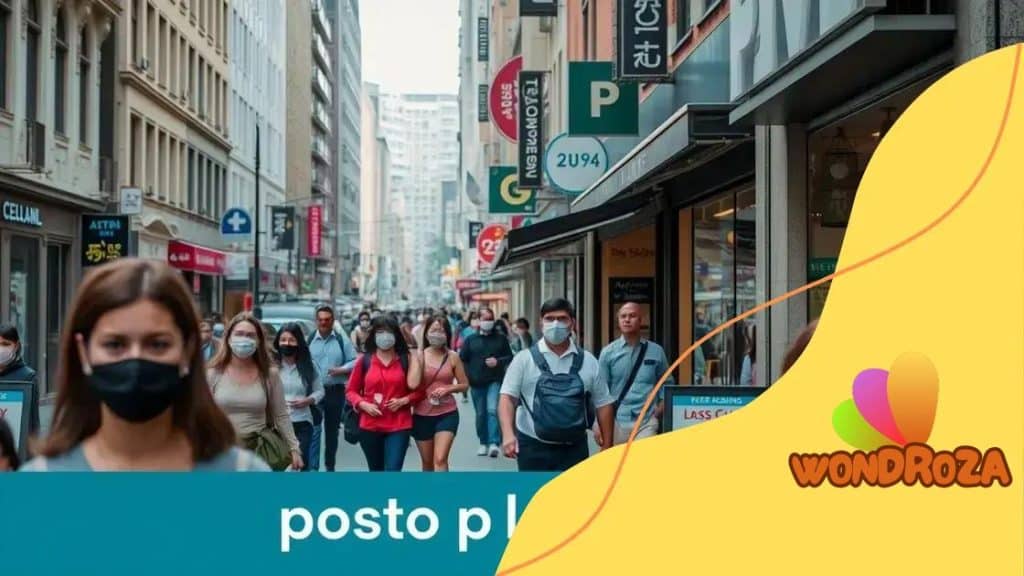How global pandemics are affecting worldwide economic recovery

Global pandemics significantly affect worldwide economic recovery by disrupting key industries such as tourism and retail, altering consumer behavior, and prompting governments to implement financial aid and infrastructure investments.
How global pandemics are affecting worldwide economic recovery is a pressing topic that influences our daily lives. Many of us wonder how these crises shape our economy and what it means for our future. Let’s dive into the effects and explore what lies ahead.
The immediate economic impact of global pandemics
The immediate economic impact of global pandemics can be seen almost instantly across various sectors. When a pandemic strikes, businesses face sudden closures, and many people lose their jobs. This unforeseen disruption affects individuals and families, creating a ripple effect throughout the economy.
Key sectors affected
Several industries encounter significant downturns during a pandemic. For instance, tourism and hospitality suffer greatly. When travel restrictions are imposed, hotels and airlines see a rapid decline in revenue.
- Travel and tourism: Flights are canceled, and hotels close
- Retail: Non-essential stores shut, affecting sales
- Manufacturing: Supply chains are disrupted
Moreover, other sectors like healthcare can become overwhelmed, as they redirect resources to deal with the crisis. The surge in demand for medical supplies puts a strain on production and distribution chains.
Impact on employment
The consequences for jobs can be devastating. With businesses unable to operate, many employees face layoffs. This sudden rise in unemployment leads to increased competition for available positions when the economy begins to recover. It can also result in a larger portion of the population relying on government support.
As we see businesses adapting through innovation and digital transformation, the impact becomes evident. Companies are investing more in technology to maintain operations under challenging circumstances. This shift may pave the way for new job opportunities even as traditional roles decline.
In summary, the immediate effects of a global pandemic manifest through job losses, industry disruptions, and increased reliance on technology, leading to long-lasting changes in the economy. Understanding these implications helps us navigate the path toward recovery more effectively.
Long-term effects on job markets and employment
The long-term effects on job markets and employment due to global pandemics can reshape entire economies. As businesses close and adapt, workers face unexpected changes in their employment landscape.
Shifts in industry demand
Many industries experience long-lasting shifts in demand. For example, sectors like travel and hospitality may take years to regain their former levels. Conversely, technology and healthcare often see an increase in job opportunities as these fields adapt to new challenges.
- Healthcare services: Increased demand for healthcare workers
- Remote work: Growth of remote job roles
- Tech industry: Higher need for digital solutions and support
As the economy gradually recovers, resumes are often rewritten. Many professionals are now seeking jobs in different fields, leading to a more fluid job market. Skills that were once in high demand may no longer hold the same value, while new skills gain importance.
Impact on workforce stability
Job security is another crucial aspect affected by pandemics. With companies reorganizing and reevaluating their workforce needs, many employees find themselves in precarious positions. The rise of automation adds another layer of complexity, as machines and AI increasingly take over tasks once performed by human workers.
Training and retraining programs become essential to help workers transition to new jobs or careers. Investing in skills and education is vital for those affected by job losses. Programs that focus on skill development can reshape the workforce to meet evolving industry requirements.
A more resilient job market emerges as workers adapt. This transition may take time, but understanding these changes can help leaders and employees prepare for future challenges and opportunities.
How consumer behavior is changing post-pandemic

The change in consumer behavior post-pandemic has been significant and multifaceted. As people adjust to new realities, their buying habits reflect shifting priorities and preferences.
Increased online shopping
One major shift is the rise in online shopping. With many stores closed or limiting access during the pandemic, consumers turned to digital platforms for their purchases. This trend continues even as physical stores reopen, as many appreciate the convenience of shopping from home.
- Growth in e-commerce platforms: More businesses are establishing online stores
- Shift in delivery services: Consumers are favoring contactless delivery options
- Increased use of mobile apps: Shopping through apps is becoming more common
As a result of this change, retailers must adapt their strategies to attract and retain online customers. Offering personalized experiences and streamlined checkouts becomes essential in this competitive landscape.
Prioritizing health and safety
Consumers are also more conscious of health and safety. They now seek businesses that prioritize cleanliness and safety protocols. This focus on hygiene has changed how stores operate, with many implementing measures to assure customers of their safety.
Moreover, the post-pandemic era has altered spending patterns. Customers are more inclined to purchase essential items, leading to increased sales in grocery and health-related products. Many are reconsidering their priorities, aligning their purchases with their values, such as supporting local businesses.
This new landscape presents challenges and opportunities for businesses adapting to meet these changing needs. Understanding these behavioral shifts can help companies create effective marketing strategies and customer engagement approaches that resonate with today’s consumers.
Key industries affected by economic recovery delays
The key industries affected by economic recovery delays reveal how interconnected our world has become. As the economy struggles to bounce back, certain sectors face unique challenges that hinder their recovery.
Tourism and hospitality
The tourism and hospitality industry is among the hardest hit. With travel restrictions and safety concerns lingering, many businesses are experiencing prolonged closures. Hotels, airlines, and restaurants are struggling to regain their previous customer volumes.
- Job losses: Significant layoffs have occurred as businesses adapt
- Changes in consumer behavior: Travelers are now more cautious
- Increased competition: Companies must innovate to attract customers
As this industry strives to recover, it often turns to new marketing strategies and digital solutions to engage potential travelers.
Retail sector
Retailers are also grappling with recovery delays. Many stores that relied on foot traffic are facing declines in sales even after reopening. The shift to online shopping has accelerated, leaving physical stores at a disadvantage.
To adapt, retailers are focusing on enhancing their online presence and offering seamless shopping experiences. This transition requires investment in technology and logistics to meet consumer expectations.
Manufacturing and supply chains
Manufacturing industries face delays in recovery due to disrupted supply chains. As factories reopen, many still encounter shortages of raw materials. These delays can lead to increased costs and longer wait times for consumers.
Companies are reevaluating their supply chain strategies to become more resilient in the face of future disruptions. Investing in local suppliers and diversifying sources can help mitigate risks.
Overall, understanding which sectors are most impacted by economic recovery delays provides insight into the broader economic landscape. By focusing on these industries, stakeholders can strategize for a more sustainable recovery.
Government responses to stimulate recovery
The government responses to stimulate recovery during economic downturns are critical for revitalizing affected sectors. Various strategies are deployed to support individuals and businesses as they navigate challenges.
Financial aid programs
One of the primary responses involves implementing financial aid programs. Governments often introduce stimulus checks to provide immediate relief to citizens, helping them cover essential expenses. Additionally, loans and grants are offered to support small businesses in maintaining operations and retaining employees.
- Direct payments: Citizens receive cash assistance to stimulate spending
- Business loans: Low-interest loans help businesses manage cash flow
- Grants: Funding for specific sectors like tourism or healthcare
These measures help preserve jobs and provide an economic lifeline during times of uncertainty.
Investment in infrastructure
Enhanced infrastructure investment is another crucial response. Governments often allocate funds to improve roads, bridges, and public transport. This not only creates jobs but also boosts local economies by facilitating commerce.
Such investments can lead to long-term benefits, as improved infrastructure supports enhanced productivity and attracts new businesses. Economic recovery can be accelerated through these strategic developments.
Support for key industries
Targeted support for specific industries, like healthcare and technology, is crucial during recovery efforts. Governments may provide incentives for research and development initiatives. This support fosters innovation and helps industries adapt to new market demands.
Moreover, policies that promote green technologies can create new job opportunities while addressing environmental concerns. The combination of economic growth and sustainability is essential for modern recovery strategies.
Understanding these government responses reveals the multifaceted approach taken to stimulate recovery. By focusing on financial aid, infrastructure, and targeted support, governments aim to create a robust economic environment that fosters resilience and growth.
FAQ – Frequently Asked Questions about Economic Recovery Post-Pandemic
What are the main challenges faced by the tourism industry during recovery?
The tourism industry faces significant challenges, including reduced travel demand, job losses, and heightened safety concerns that make recovery slow.
How has consumer behavior changed after the pandemic?
Consumer behavior has shifted towards increased online shopping, with people being more cautious about health and safety while shopping.
What role do governments play in economic recovery?
Governments provide essential financial aid programs and investments in infrastructure to support businesses and stimulate job growth during recovery periods.
Which industries are most affected by economic recovery delays?
Industries such as tourism, retail, and manufacturing are among the hardest hit, facing challenges that slow their recovery.





